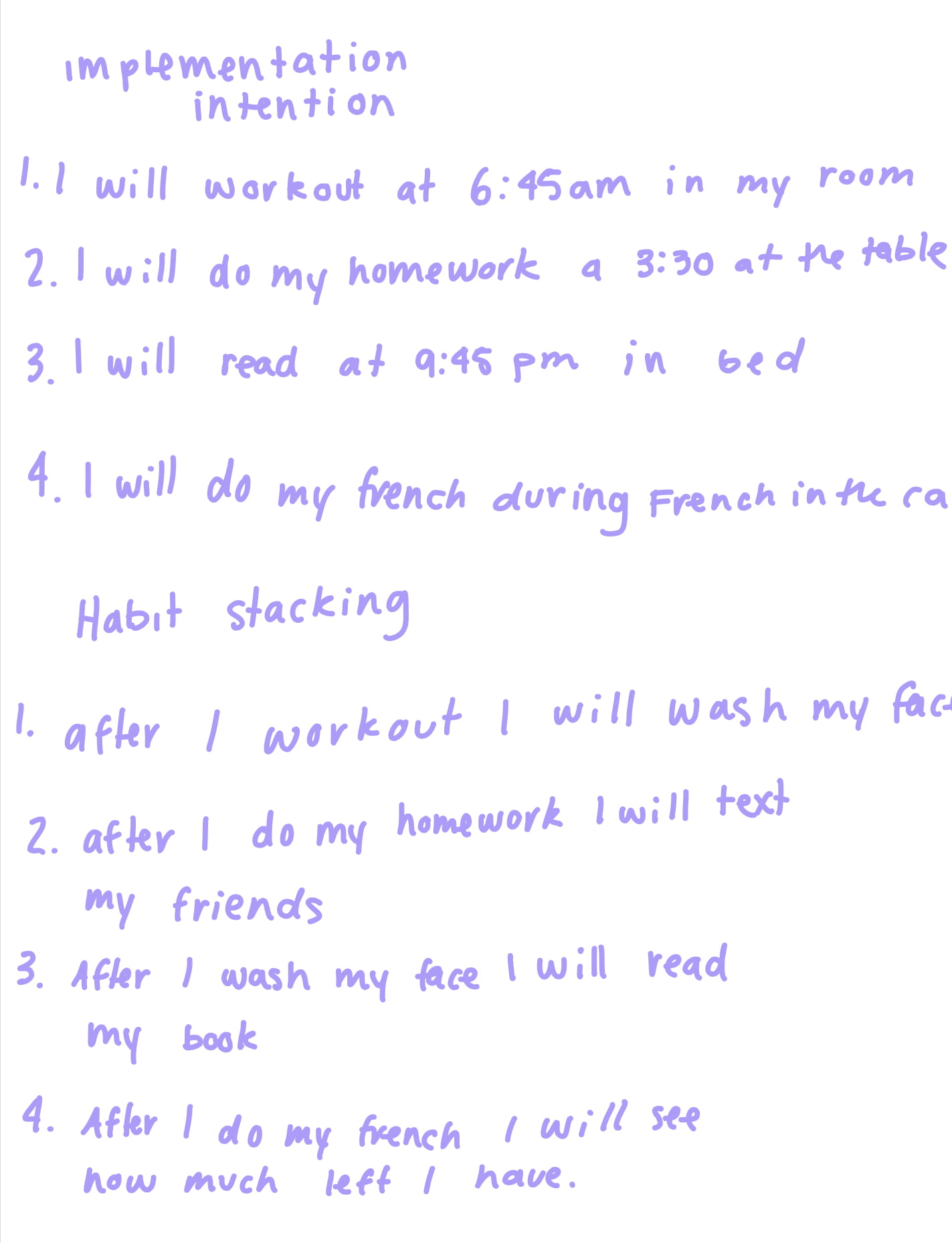When we (PLP 11) were assigned this project, Ms. Maxwell made an example fo showing us the Ivy Lee method. She had a tab specifically for it and shared that if she were to pick a habit off of James Clears website it would be the Ivy Lee method. At that point I didnt really know what the Ivy Lee method was, sounded cool, but I thought I would personally look through all the posts and find something fitting for me. So that’s exactly what I did. I spent a good chunk of time getting lost in links from page to page, and then realizing I was lost and hoping the back button would bring me around to an all too familiar home page. In all this searching though I only found one post that caught my attention, and I felt it was a shame that it was the exact same one that Ms. Maxwell had used as an example earlier that day. I just couldn’t find any other habit that would benefit me as much, as well as be an easy integration into my life. In this long and rambling paragraph it is my way of saying that I chose the Ivy Lee method. And I think I was quite right to choose it.
My understanding of the Ivy Lee Method is that you start with 6 tasks. They can be any 6 tasks, or chores or errands, just anything you need to do. At the end of the day you check back on your 6 tasks and if you completed all of them, good going, you get to make 6 more tasks for the next day, if you didn’t complete all of them (alike me) you carry any uncompleted task over to the next day and incorporate it into your 6 tasks. Seems simple (and it is) but it’s also revolutionary. I have found in the roughly 2 weeks that I have been doing this that I have become much more productive, because I don’t want tasks to drag over onto new days. I like to keep the list fresh which pushes me to complete the assigned work! It’s really great and I don’t have anything negative to say about the Method.
I have included scans of my lists in this post and you can see that they are simple lists made on sticky grid paper. You might also be able to see that I have exceeded 6 tasks on certain days which I have a good reason for. This reason is that during COVID I have a hard time feeling excited to focus and get to work, so I decided to add really simple tasks to my lists, like send text to so-and-so, water plants, etc. Crossing off these tasks gave me a bit more energy to complete the trickier tasks. Though once COVID is over, I will return to the 6 tasks per day!
All in all a really good habit, and I highly suggest everyone incorporate it into their life!




